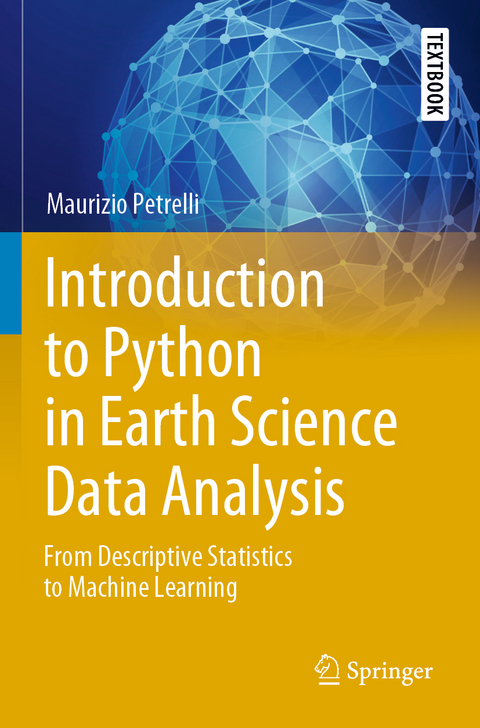
Introduction to Python in Earth Science Data Analysis
Springer International Publishing (Verlag)
978-3-030-78057-9 (ISBN)
Maurizio Petrelli works as a researcher in petrology and volcanology at the Department of Physics and Geology, University of Perugia. In 2001, he graduated in Geology and obtained his PhD in February 2006 at the University of Perugia.His current studies are focused on the petrological, volcanological and geochemical characterization of magmatic systems with particular emphasis on time-scales estimates of magmatic processes. He combines the use of numerical simulations, experimental petrology and the study of natural samples. Since 2016, he has developed a new line of research at the Department of Physics and Geology, University of Perugia focused on the application of Machine Learning techniques to petrological and volcanological studies.
Part I Python for Geologists, a kick-off.- Setting Up Your Python Environment, Easily.- Python Essentials for a Geologist.- Start Solving Geological Problems Using Python.- Part II Describing Geological Data.- Graphical Visualization of a Geological Dataset.- Descriptive Statistics.- Part III Integrals and Differential Equations in Geology.- Numerical Integration.- Ordinary Differential Equations (ODE).- Partial Differential Equations (PDE).- Part IV Probability Density Functions and Error Analysis.- Probability Density Functions and their Use in Geology.- Error Analysis.- Part V Robust Statistics and Machine Learning.- Introduction to Robust Statistics.- 12. Machine Learning.
| Erscheinungsdatum | 20.09.2022 |
|---|---|
| Reihe/Serie | Springer Textbooks in Earth Sciences, Geography and Environment |
| Zusatzinfo | XV, 229 p. 112 illus., 104 illus. in color. |
| Verlagsort | Cham |
| Sprache | englisch |
| Maße | 155 x 235 mm |
| Gewicht | 385 g |
| Themenwelt | Mathematik / Informatik ► Informatik ► Theorie / Studium |
| Mathematik / Informatik ► Mathematik | |
| Naturwissenschaften ► Geowissenschaften ► Geologie | |
| Schlagworte | Earth Science Python Programming • Machine Learning in Geology • Modelling Geological Data • Ordinary differential equations • Partial differential equations • Python Learning for Geologists |
| ISBN-10 | 3-030-78057-0 / 3030780570 |
| ISBN-13 | 978-3-030-78057-9 / 9783030780579 |
| Zustand | Neuware |
| Haben Sie eine Frage zum Produkt? |
aus dem Bereich


